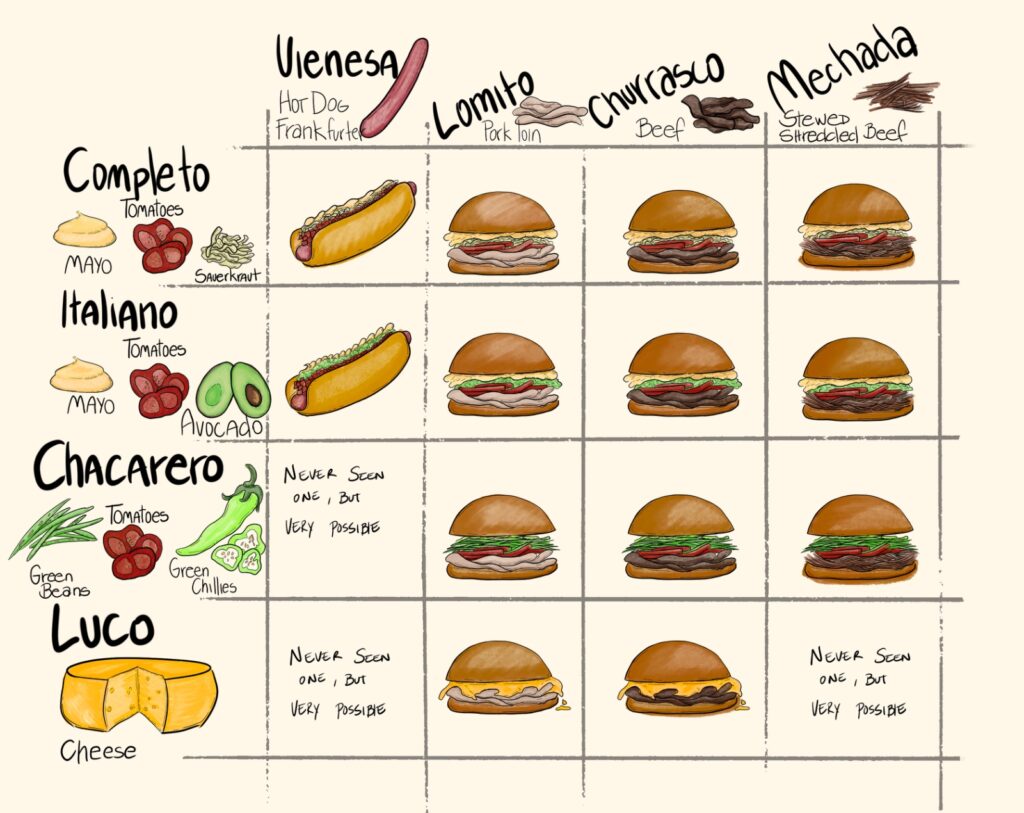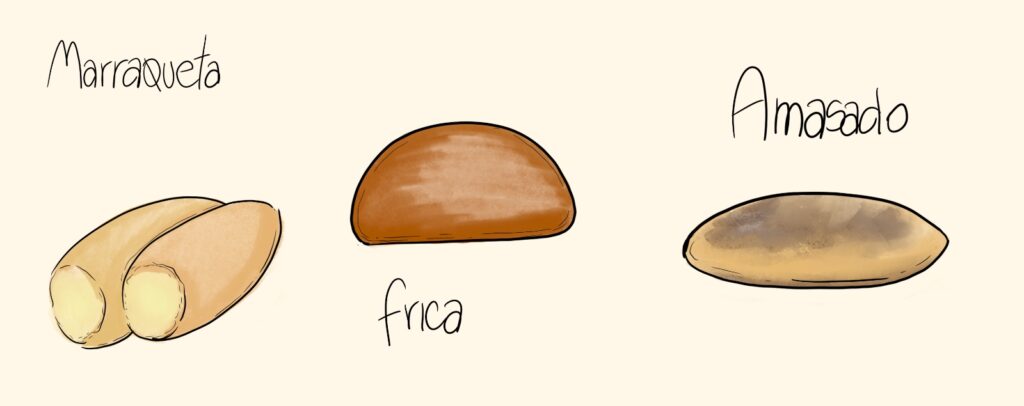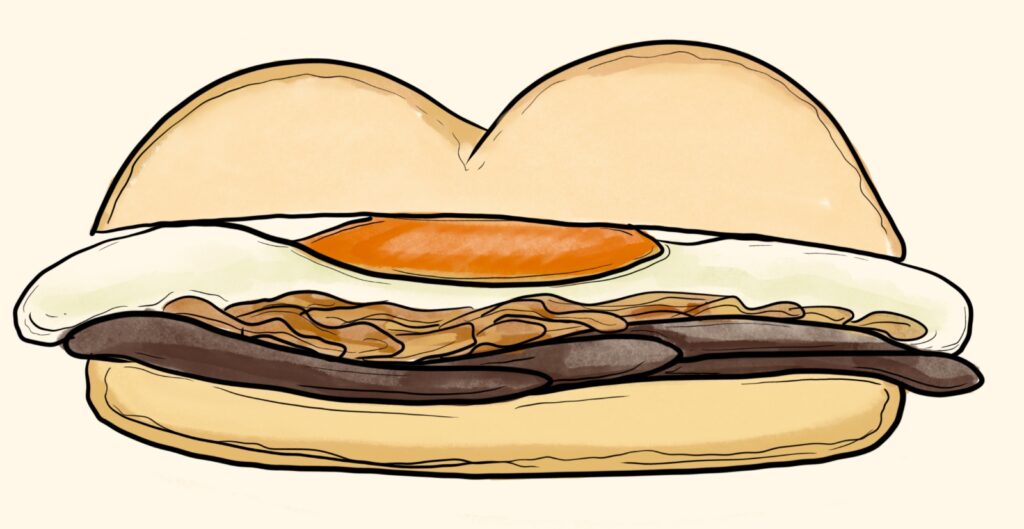You might’ve heard that Chile doesn’t have much variety when it comes to street food—and that’s true. Most cart-based fare sticks to the classics: fried treats like sopaipillas and empanadas, or simple breakfast options like fresh fruit cups, yoghurt con granola, and the occasional pan con pescado (fish sandwich).
But what we do have is a sandwich (sánguche) culture that runs deep. In fact, sandwiches are taken so seriously here that we have entire restaurants—called sangucherías—dedicated almost exclusively to crafting them. And they’re not your average sandwiches. These are flavorful, stacked, and sometimes messy masterpieces that locals are fiercely proud of.
While sangucherías love experimenting with new combos, there are some classic creations you absolutely need to try. And if you want to order like a pro, this guide will help you crack the sánguche code—because even if you speak Spanish, chances are you don’t yet speak Sánguche.
The Anatomy of a Chilean Sánguche
A typical Chilean sandwich has three components, and each one earns its own name:
- The Protein – like lomito (slow-cooked pork loin) or churrasco (thinly sliced beef).
- The Filling Combo – like completo (tomato, sauerkraut, mayo) or italiano (tomato, avocado, mayo).
- The Bread – you’ll usually get to choose from traditional types.

Choosing Your Bread
- Marraqueta (also called pan batido): Chile’s beloved crusty bread. Think of it as a mini baguette—crunchy on the outside, soft inside, and shaped into two connected rolls. Great if you like a bit of crunch.
- Frica: A soft, burger-style bun that’s light and fluffy. It’s usually the “lighter” option—though to be clear, nothing about a sánguche is actually light!
- Pan Amasado: Literally “kneaded bread,” this rustic homemade-style bread is made with lard for rich flavor. It’s the heaviest and most filling option, with a thick crumb and a softer crust than the Marraqueta.

Classic Combos You Should Know
Barros Luco & Barros Jarpa
Near La Moneda (Chile’s presidential palace) sits Café Torres, one of the country’s oldest cafés. Back in the early 1900s, it was a popular haunt for politicians.
- Barros Luco: Named after President Ramón Barros Luco (1910–1915), who always ordered lomito con queso fundido (pork loin with melted cheese).
- Barros Jarpa: A simpler version named after Foreign Minister Ernesto Barros Jarpa, who preferred jamón con queso fundido (ham with melted cheese).
Want something cold instead? A basic ham and cheese sandwich is called an Aliado, because—naturally—ham and cheese are the best of allies.
Bonus: The Mystery Sandwich
Meet the Chemilico—a true wildcard. No one knows where the name came from, but it’s a beloved oddity: steak (usually churrasco), topped with a runny fried egg and often sautéed onions. Unapologetically indulgent.

Want to try these sandwiches the local way?
Book our Santiago City Tour with the Local Flavours add-on and discover Chile’s most iconic street foods and sánguches with a knowledgeable guide by your side. Taste your way through the city while learning the stories and traditions behind each bite.
Pro Tips for First-Timers
Save this sánguche cheat sheet—you’ll thank yourself later.
- Watch out for the red squeeze bottle. It’s likely ají rojo (spicy chili sauce), not ketchup. Ketchup is usually in the green bottle.
- Mustard = yellow bottle.
- Extra mayonnaise? Ask for it when ordering—there’s usually an extra charge.
Now you’re ready to order like a local. ¡Buen provecho!
